
You probably know a brine as a salty liquid that you let meat soak in to help tenderize and add flavor before cooking. Brines work for all different types of meat, including a traditional ham. One nontraditional ingredient that is often used in a ham brine is cola. With standard cola and some additional ingredients, you can create a brine for your ham that adds different dimensions of taste and texture.
The Ham
A ham is part of the leg of a pig, and you can buy it already cooked, dry or wet cured or completely uncooked. If you plan on brining your ham with cola, buy it uncooked so you can go through the whole process from the start. A whole ham includes the butt and shank hams and they can weigh up to 20 pounds and come with the bone-in or removed. If this is your first attempt at using a cola brine, ask for a smaller, boneless ham so it is easier to manage.
The Brine
Cola may be the main feature of your brine, but it shouldn't be the only ingredient. For a brine that delivers lots of flavor into the meat and does its tenderizing job, add kosher salt or table salt, bay leaves, garlic cloves and peppercorns to the cola. Once the brine is thoroughly mixed, place it and the ham into a large, resealable bag and set it into the refrigerator. Leave it alone for 12 to 24 hours before you bake it. You can also make a glaze with brown sugar and cola as the base to spread on the ham as it bakes for added flavor.
The Technique
If your ham comes with a thick rind on top of it, which many uncooked hams do, slice into it before adding it to the cola brine. Use a serrated knife and make a crisscross diamond pattern about 1/4-inch into the rind, but not into the meat itself. After the brining process is over, pat the outside of the ham with a paper towel to remove excess brine, then bake your brined ham for 18 to 25 minutes per pound at 350 degrees Fahrenheit. If you're using a glaze, plan on brushing the ham every 45 minutes or so during the baking process.
Safely Cooked Through
Fresh ham should be cooked to an internal temperature of 145 F. Use a meat thermometer in the thickest part of the ham to check the internal temperature. If the outside of your ham gets darker than you'd like and the inside still isn't hot enough, cover the ham with aluminum foil to slow down the browning, but keep the rest of it baking.
Related Articles
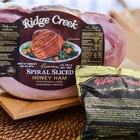
Cooking Instructions for a Ridge Creek ...
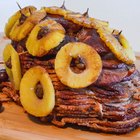
How to Cook a Toupie Ham With Pineapple

How to Fully Cook a Hickory Smoked Ham
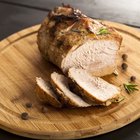
How to Cook a Tavern Ham
Can You Freeze a Spiral Ham?

How to Cook a Filipino Ham

How Do I Roast a Picnic Ham?

How to Smoke a Ham in a Bradley Smoker
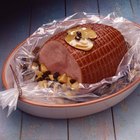
How to Cook a Daisy Ham

How to Brine a Ham With Sugar
Tips on How to Cook a Spiral Ham
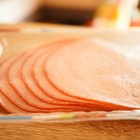
Ham Nutrition Information

How Do I Cook a Smoked Gammon Joint?

How to Freeze Cooked & Smoked Ham
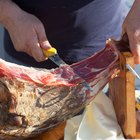
How to Cook a Ham: Removing the Skin
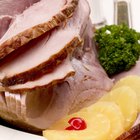
How to Bake a Juicy Tender Ham

How to Cook a Boneless Ham on a ...

The Best Way to Cook a Shank Half Ham
How to Cook a Ham With Brown Sugar, ...
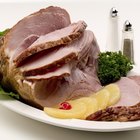
How to Cook a Ham in a Crock-Pot vs. ...
References
Writer Bio
Joshua McCarron has been writing both online and offline since 1995. He has been employed as a copywriter since 2005 and in that position has written numerous blogs, online articles, websites, sales letters and news releases. McCarron graduated from York University in Toronto with a bachelor's degree in English.
Photo Credits
Ablestock.com/AbleStock.com/Getty Images